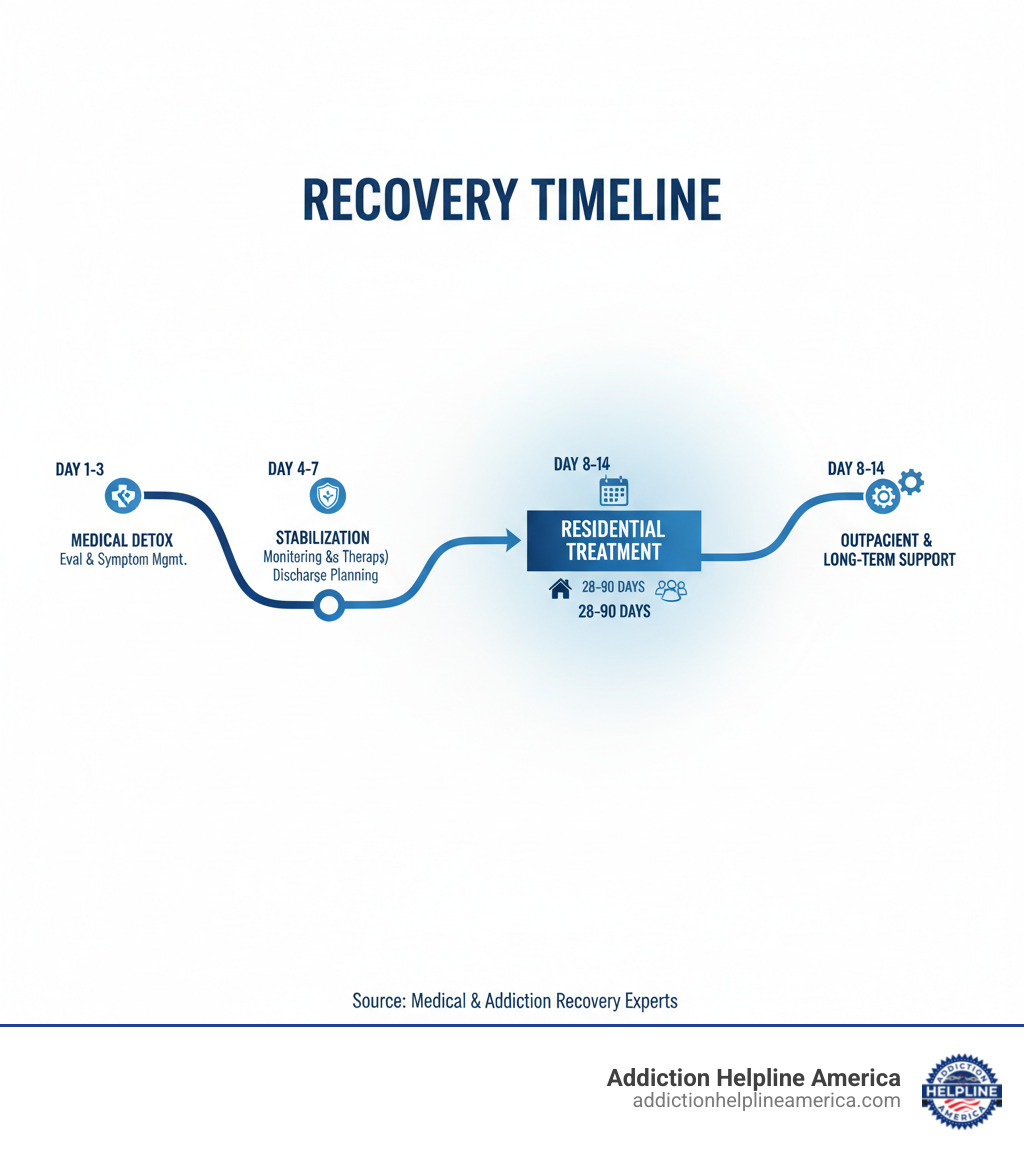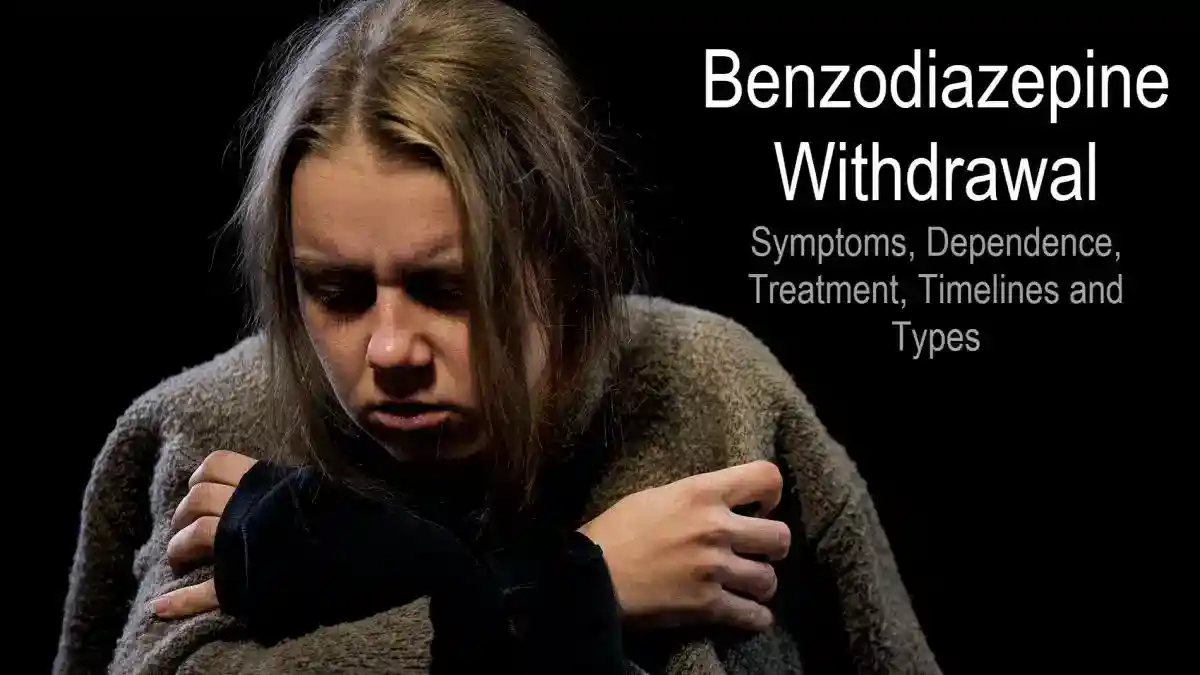
Why Drug Detox Inpatient is the Safest First Step to Recovery
Drug detox inpatient is a medically supervised program where individuals live at a treatment facility while safely withdrawing from drugs or alcohol under 24/7 professional care. It is the safest first step for anyone serious about recovery.
Quick Overview:
- What it is: A live-in program providing medical supervision during withdrawal.
- Duration: Typically 3-7 days, but up to 14 days for opioids or benzodiazepines.
- Who needs it: Those with severe addiction, a history of dangerous withdrawal, or co-occurring medical conditions.
- What’s included: Medical monitoring, medication for symptom relief, psychiatric care, and discharge planning.
- Cost: Covered by most insurance plans, including Medicaid and Medicare.
The decision to stop using drugs or alcohol is brave, but the early days of recovery can bring uncomfortable and sometimes life-threatening withdrawal symptoms. Withdrawal from alcohol can cause seizures, and stopping benzodiazepines abruptly can be fatal. This is where inpatient drug detox becomes critical.
Unlike quitting at home, inpatient detox provides a safe, structured environment where medical professionals monitor you around the clock. They manage withdrawal symptoms with medication, treat complications immediately, and prepare you for the next phase of recovery. Research shows that medically supervised detox significantly reduces the risk of relapse and medical emergencies.
This guide will help you understand what makes a top-tier inpatient detox program and compare the five key features you should look for when choosing where to begin your recovery journey.
At Addiction Helpline America, we’ve connected thousands of individuals with effective drug detox inpatient programs custom to their unique needs. We’re here to help you or your loved one take that crucial first step toward lasting sobriety.

Drug detox inpatient terms made easy:
What to Expect from a Top-Tier Drug Detox Inpatient Program
Choosing a drug detox inpatient program means stepping into an environment designed to keep you safe, comfortable, and focused on healing. The core of any top-tier facility is 24/7 medical supervision, where trained professionals are always present to monitor your condition and intervene if complications arise. This constant presence is lifesaving.
The structured environment removes you from daily triggers and stressors, providing a safe space with no access to drugs or alcohol. Your only job is to get well. Upon arrival, you’ll undergo an initial evaluation so a multidisciplinary care team—including physicians, nurses, and counselors—can create a personalized path forward. You can learn more about this journey by reading about What to Expect in Rehab.
Top-tier programs treat you with dignity and compassion, setting a solid foundation for everything that comes next.

The Admission and Evaluation Process
When you arrive at a drug detox inpatient facility, the admission process gathers the information needed to keep you safe. This includes a physical health screening with lab tests to assess your overall health and check for any conditions that could affect withdrawal.
Simultaneously, a mental health assessment identifies co-occurring conditions like depression, anxiety, or PTSD, which affect nearly 80% of individuals in treatment. Your substance use history—what, how much, and for how long you’ve been using—is also documented to help the team anticipate withdrawal symptoms.
This information is combined into your initial care plan, a personalized roadmap for your detox. This comprehensive approach is what makes medically supervised Detox far safer than quitting on your own.
Managing Withdrawal Symptoms Safely
The primary role of a drug detox inpatient program is to manage withdrawal symptoms with medical expertise and compassionate care.
Medical monitoring occurs around the clock, with staff regularly checking your vital signs to track how your body is responding. This is especially critical for alcohol and benzodiazepine withdrawal, where symptoms can quickly become dangerous.
Symptom relief through medication makes withdrawal more bearable. Medications can ease nausea, reduce anxiety, prevent seizures, and help you sleep. The medical team tailors these medications to your specific needs, adjusting them throughout your stay. You can learn more about substance-specific protocols like Alcohol Detox.
Preventing complications is a top priority, with staff watching for warning signs of serious issues like delirium tremens or cardiac problems. Throughout this process, you’ll also receive psychological support from counselors to help manage the anxiety and emotional distress that accompany physical symptoms. You are never alone.
Comparing 5 Key Features of the Best Inpatient Detox Programs
When searching for the right drug detox inpatient program, knowing what to look for can make all the difference. Not every facility offers the same level of care, and these differences can impact your safety and long-term success.
The best programs don’t just get you through withdrawal; they set you up for what comes next, recognizing that detox is only the beginning. They integrate medical care, personalized planning, therapy, and aftercare into one comprehensive approach.
Understanding these five key features will help you ask the right questions and make an informed choice. At Addiction Helpline America, we’ve seen how the right program can build momentum toward a life free from addiction. Let’s look at what’s essential for a program to truly support your recovery from day one.
1. Comprehensive Medical and Psychiatric Care
A top drug detox inpatient program understands that addiction affects both physical and mental health. Truly comprehensive care addresses the whole person.
Medically-Assisted Treatment (MAT) is often central to effective detox, especially for opioid and alcohol addiction. It involves using FDA-approved medications under medical supervision to ease withdrawal symptoms and reduce cravings. Combined with behavioral support, MAT provides a strong foundation for recovery.
Since nearly 80% of individuals in rehab also struggle with a mental health condition like depression or anxiety, integrated dual diagnosis care is essential. Treating addiction while ignoring mental health rarely leads to lasting recovery. Top-tier programs provide psychiatric evaluations and care from the start, addressing both issues simultaneously. Our Rehab Centers for Co-Occurring Disorders specialize in this whole-person approach.
The role of medication in inpatient detox also includes managing the full range of withdrawal symptoms, from nausea and insomnia to more serious issues like seizures or dangerous blood pressure changes. This is a medical necessity that keeps you safe and comfortable.
This level of care is coordinated by a team of doctors, nurses, and counselors, ensuring you receive treatment that addresses all of your needs.
2. Individualized Treatment and Planning
In a top drug detox inpatient program, you are not a case number. The best programs build care around your unique story, challenges, and needs. Your recovery plan shouldn’t follow a template.
From day one, the team works to create a personalized care plan based on your substance use history, health conditions, and life circumstances. The substance you’re withdrawing from matters greatly. Alcohol detox may take a week, while benzodiazepine or opioid withdrawal can require a more gradual approach of two weeks or longer. Our Opioid Addiction Treatment protocols are designed around these substance-specific needs.
While the average stay is 5-7 days, your treatment duration is based on your clinical progress, not a calendar. You move forward when you are medically stable and ready for the next phase of recovery.
Special populations, such as pregnant women or teenagers, receive specialized care that addresses their unique needs. For example, our approach to Adolescent Substance Abuse recognizes the developmental factors young people face. When treatment is built around you as a person, you are far more likely to succeed.
3. Evidence-Based Therapeutic Support
While medical care keeps you physically safe during drug detox inpatient, therapeutic support is essential for addressing the mental and emotional aspects of addiction.
Individual counseling sessions provide a safe space to explore personal triggers and develop coping mechanisms. This one-on-one attention ensures your unique story is heard.
Group therapy offers powerful connection with others who understand your struggle. In these sessions, you share experiences, learn from peers, and realize you are not alone. Groups often focus on topics like managing anxiety and preventing relapse.
Psychoeducational groups teach you the science of addiction, helping you understand it as a disease, not a moral failing. This knowledge empowers your recovery.
Because addiction affects the entire family, top programs offer family involvement, including counseling and support groups. Healing these relationships builds a strong foundation for lasting change. Our Family Support Addiction resources can help your loved ones on this journey.
We also help you find ongoing support, like Addiction Support Groups Near Me, to build a community for your life in recovery.
4. A Clear Path to Long-Term Recovery
An effective drug detox inpatient program knows that detox is just the beginning—an essential first step, but not the whole journey. The best programs ensure you have a clear roadmap for what comes next.
It’s vital to understand that detox and rehabilitation are not the same thing. Detox focuses on medical stabilization by safely removing substances from your body. Rehabilitation is the deeper work of addressing the psychological side of addiction, where you learn coping skills and relapse prevention strategies.
This is why comprehensive discharge planning is so critical. From the moment you arrive, the team works with you to create a personalized aftercare plan. This plan often includes aftercare coordination with different levels of care, such as:
- Residential treatment for intensive therapy.
- Outpatient care, allowing you to live at home while attending sessions.
- Community-based resources like sober living homes.
The key is continuity. The best drug detox inpatient programs bridge the gap between medical stabilization and long-term healing, supporting you well beyond your initial stay. We emphasize exploring comprehensive Treatment Options that evolve with your recovery.
5. Facility Accreditation and Standards
When choosing a drug detox inpatient program, you need assurance that you’re in safe, capable hands. Facility accreditation and standards provide that guarantee.
All legitimate centers must have state licensure, which ensures they meet basic health and safety regulations. However, the best programs go further by earning national accreditation from organizations like The Joint Commission or the Commission on Accreditation of Rehabilitation Facilities (CARF). These credentials signify a commitment to high-quality, evidence-based care.
Staff qualifications are also crucial. A top-tier program employs a multidisciplinary team of licensed professionals, including physicians, nurses, and counselors, often with specialized certifications in addiction medicine.
Finally, the environment itself should feel safe, clean, and supportive, allowing you to focus on healing without judgment or outside stressors. To see what a quality inpatient unit looks like, you can watch this VIDEO: Take a Tour of the CATS Inpatient Unit.
These standards are meaningful indicators that you will receive care that is both compassionate and clinically sound.
Signs You Need a Drug Detox Inpatient Program
Recognizing when professional help is necessary is a critical step toward recovery. Certain warning signs indicate that a drug detox inpatient program is essential for safety and success.
-
Severe withdrawal symptoms: If past attempts to quit led to seizures, hallucinations, delirium tremens (DTs), or other dangerous physical reactions, medical supervision is required. Withdrawal from alcohol and benzodiazepines can be fatal if attempted alone.
-
History of relapse: If you’ve tried to quit before but found yourself quickly returning to use, an inpatient program can provide the protected space and intensive support needed to break the cycle.
-
Co-existing medical conditions: Chronic illnesses like heart disease, diabetes, or liver problems can make withdrawal unpredictable and dangerous. Inpatient facilities are equipped to manage these risks.
-
Unsupportive home environment: Living with others who use substances or in a conflict-ridden environment can sabotage recovery. A temporary move to a healing-focused facility can be the healthiest choice.
-
Failed outpatient attempts: If less intensive approaches haven’t worked, it’s a sign that you need the 24/7 structure and medical oversight that only an inpatient setting can provide.
If these signs resonate, a Substance Use Self-Test can offer clarity. Our guide on How to Stop Addiction also provides actionable advice. Asking for help is the bravest thing you can do.
Navigating Logistics: Cost, Insurance, and Finding Help
Thinking about the cost of a drug detox inpatient program can be overwhelming, but treatment is often more accessible than you might think.
While the cost of inpatient detox varies, most patients do not pay the full price out of pocket. Health insurance typically covers a significant portion of treatment expenses.
If you have private insurance, there’s a good chance your plan covers inpatient detox. We encourage you to call the number on your insurance card to verify your coverage. For those with Medicaid or Medicare, many quality inpatient detox facilities accept these forms of coverage.
If you don’t have insurance, don’t let that stop you from getting help. Many non-profit or state-funded programs offer services on a sliding scale based on income, or even free of charge to those who qualify. Financial barriers should not prevent you from accessing life-saving care.
Finding the right facility is another hurdle we can help you clear. Our Drug Rehab Inpatient Near Me page helps you locate programs in your area. The Substance Abuse and Mental Health Services Administration (SAMHSA) also has a tool to Find a treatment facility.
If you need guidance, our Addiction and Rehab Hotlines are available for free, confidential support. We can help you understand your options and connect you with a program that fits your needs. Don’t let cost concerns keep you from seeking help.
Frequently Asked Questions about Inpatient Drug Detox

How long does a drug detox inpatient stay last?
The length of a drug detox inpatient stay depends on your unique situation. The average is 5-7 days, but this can vary. Withdrawal from substances like benzodiazepines or opioids may require a longer stay, sometimes up to 14 days or more. Your length of stay is determined by clinical milestones, not a fixed calendar date. You will remain in care until you are medically stable and ready for the next phase of recovery.
What is the difference between detox and rehabilitation?
Detox and rehab are two distinct but equally important phases of recovery.
Drug detox inpatient is the first step, focused on medical stabilization. Its purpose is to safely manage the physical symptoms of withdrawal under medical supervision.
Rehabilitation is the next phase, where the psychological aspects of addiction are addressed. Rehab involves therapy and counseling to explore the root causes of substance use and build the skills needed for long-term sobriety. In short, detox addresses the body, while rehab addresses the mind.
Are there risks with a drug detox inpatient program?
When conducted in a medically supervised setting, a drug detox inpatient program is designed to be as safe as possible. The entire purpose is to minimize risk.
With 24/7 medical supervision, trained professionals can immediately address any complications, such as seizures or severe dehydration. The real danger lies in attempting to detox at home, which can be life-threatening, especially with alcohol or benzodiazepines.
You should also avoid unproven and dangerous methods like “rapid detox” or “ultra-rapid detox.” These approaches carry significant medical risks, including heart attack and death, and are not considered a safe or effective practice. A proper, medically managed withdrawal is the safest and most humane way to begin your recovery journey.
Conclusion: Taking the Next Step Toward Recovery
Understanding drug detox inpatient programs is a courageous step toward healing for yourself or a loved one.
The safest first step in recovery is medically supervised detox. Unlike quitting at home, inpatient programs provide 24/7 medical care to manage withdrawal symptoms safely. The best programs offer comprehensive, individualized care and, crucially, create a clear plan for your transition into the next phase of treatment.
Detox alone isn’t enough for lasting recovery. It is the essential first chapter, but rehabilitation—where you build new coping skills—is where long-term change happens. With professional guidance, lasting sobriety is within your reach.
At Addiction Helpline America, we’ve helped thousands of people find the right drug detox inpatient program. Our guidance is free, confidential, and available nationwide. We’re not here to push you toward a particular facility—we’re here to help you find the one that’s right for you.
You don’t have to figure this out alone. Hope and healing are available today.
Get Help or Explore different types of treatment programs to begin your journey toward a new beginning.
Our helpline is 100%
free & confidential
If you or someone you care about is struggling with drug or alcohol addiction, we can help you explore your recovery options. Don’t face this challenge alone—seek support from us.
Programs
Resources
Will my insurance
cover addiction
treatment?
We're ready to help
Find the best
drug or alcohol treatment
center
Are you or a loved one struggling with addiction? Call today to speak to a treatment expert.













